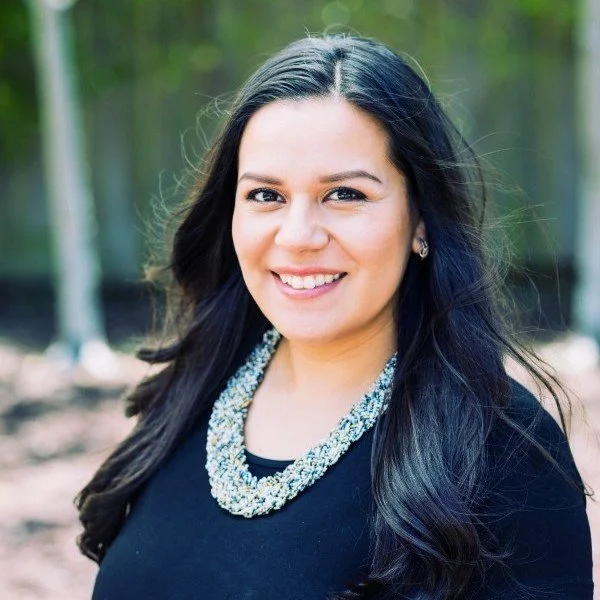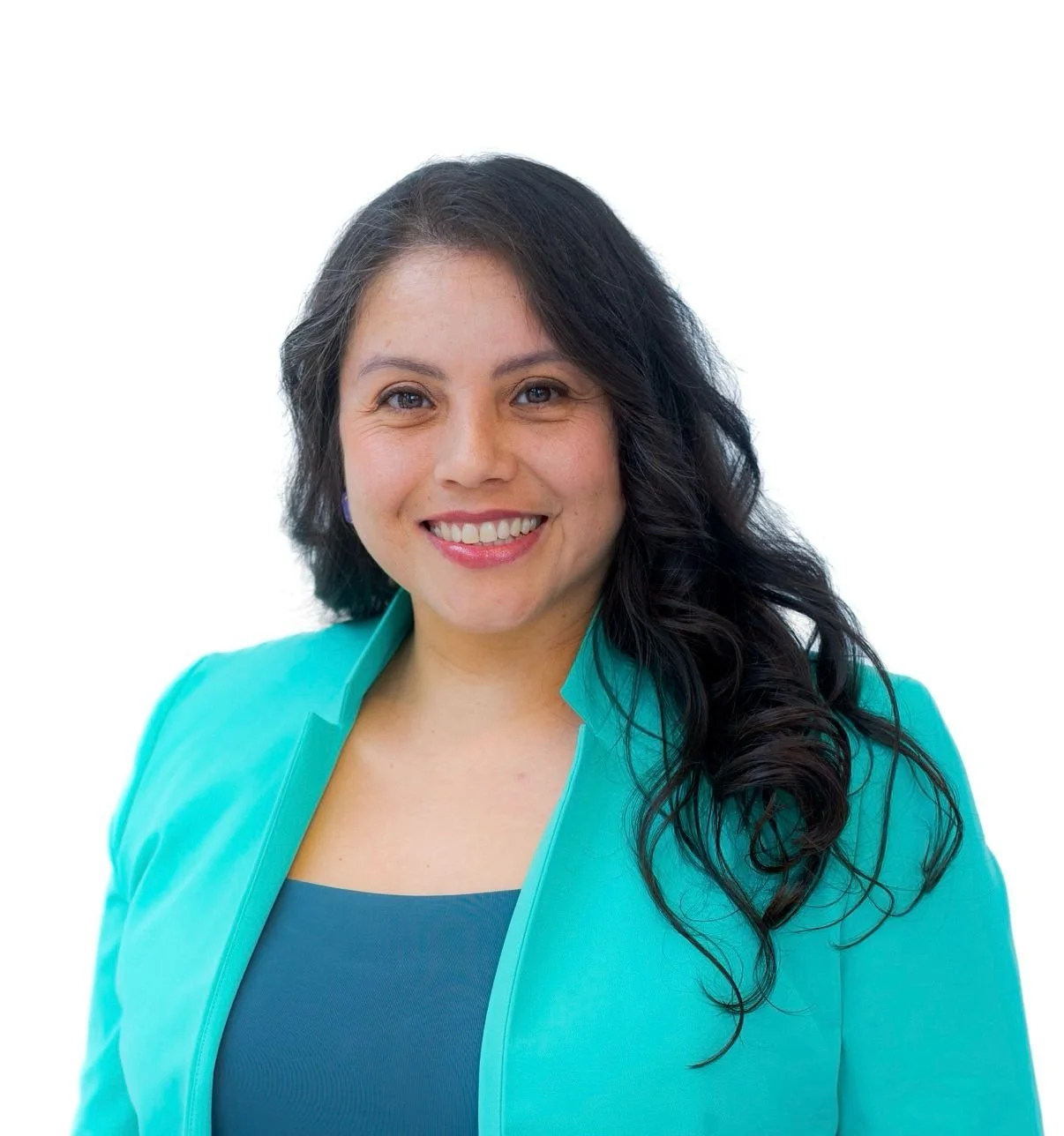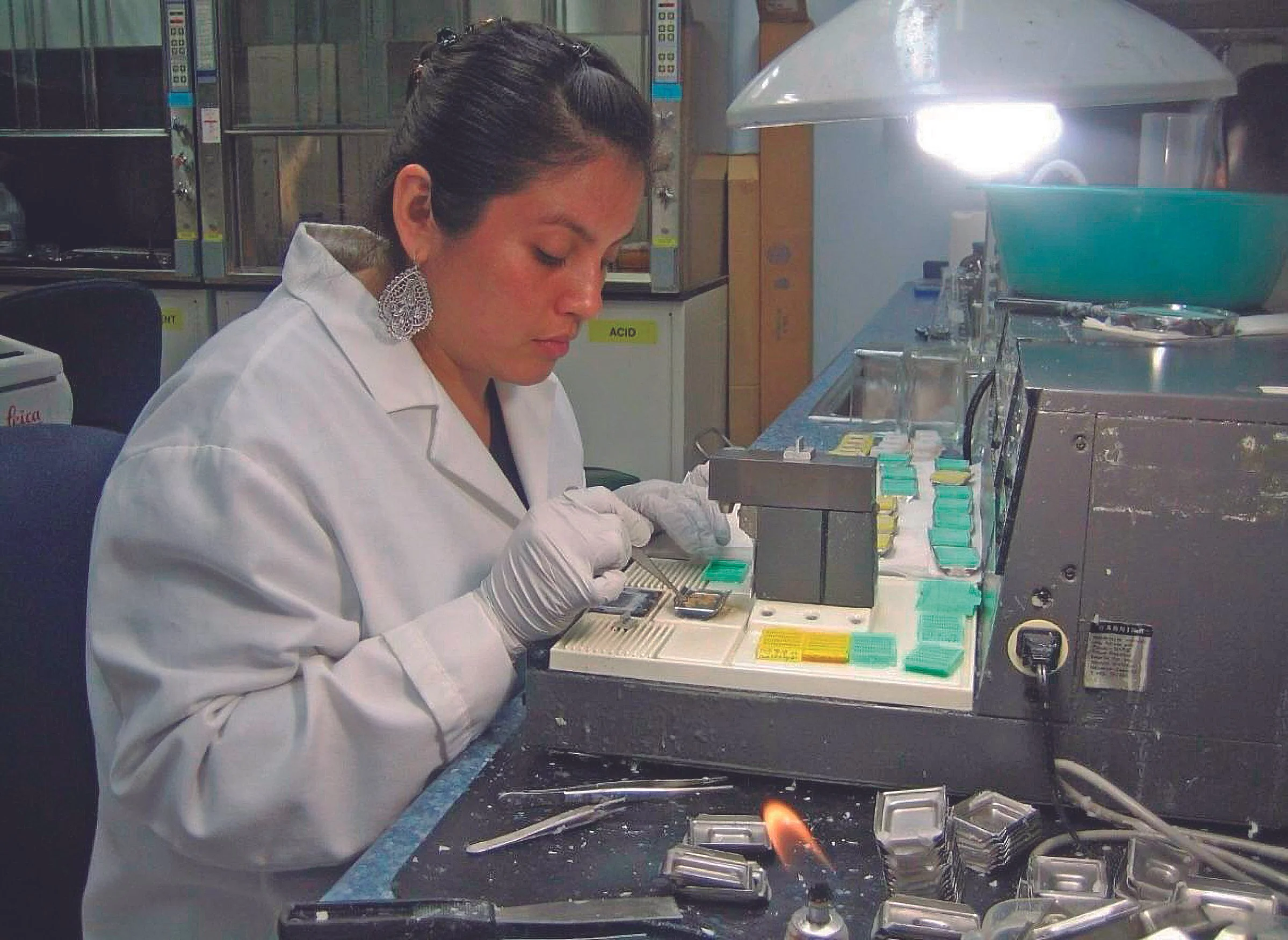Latina Innovators in STEM
By Gloria Romano-Barrera
Rubi G. Solis
Electrical Systems Engineer Stf
Lockheed Martin Space - Waterton
Rubi G. Solis, Electrical Systems Engineer, Stf, Lockheed Martin Space – Waterton; Michelle Rodriguez, Director, Diversity, Inclusion, and Belonging, LinkedIn; and Dr. Teresa Ramírez, a first-generation Mexican American scientist and changemaker with over 20 years of experience in biomedical research, embody the true spirit of Latina leadership in STEM—a journey marked by passion, adaptability, and an unwavering commitment to the community. They have transformed an unexpected career path into a remarkable story of success.
When Rubi G. Solis stood beneath the roaring thunder of a space vehicle launch in Cape Canaveral, FL., she wasn’t just watching a satellite rise into the cosmos—she was witnessing the embodiment of a lifelong dream that started far from the launchpad.
Born in Comitán de Dominguez, Chiapas, Mexico, Solis moved to Colorado as a child. Learning English as her second language, she soon discovered a love for problem-solving and curiosity that defied boundaries—even those traditionally drawn in science, technology, engineering, and mathematics. Today, Solis has transformed her childhood dreams into a remarkable reality at Lockheed Martin as an Electrical Systems Engineer.
As a systems integration test engineer, Solis plays a critical role in powering space vehicles and satellites, a journey that began with an unexpected passion. "I originally did not want a sit-down desk job," she recalls. "I am very hyperactive and love to do multiple things at once.” Solis started as an intern at Lockheed Martin while attending Metropolitan State University of Denver.
While many would have been daunted by the weight of college coursework and the pressure of a major aerospace company, she embraced the challenge. She even turned down her first full-time offer to focus on finishing her degree—only to later balance a full-time role and her final semester simultaneously. In an industry where women —especially Latinas—are still underrepresented, Solis found strength in her parents and heritage.
“My mom probably was the biggest pusher,” she shares. “She always encouraged me. My parents are very proud and very excited. My parents gave up so much so I could dream bigger. They had to sacrifice so much coming here for me to be able to not do that. And for them to see me grow and be comfortable in this company is so big. I had no other choice but to succeed. I had to set an example for my younger siblings and honor the sacrifices my family made.”
That strength carried her through one of her proudest accomplishments: designing and testing a critical circuit card used in a space vehicle. After weather delays and travel hurdles, Solis made it to the Florida launch just in time. The vehicle she helped build now orbits far above Earth. Her determination has paid off. Solis has been part of multiple space launches, experiencing the profound moment when her meticulously designed circuit cards power vehicles venturing into the cosmos. "Seeing your work go into space is beautiful," she reflects. "It's a really great feeling."
Beyond her technical achievements, Solis is passionate about inspiring the next generation. She frequently visits schools, sharing her story to show young Latinas that engineering is within their reach. “I think about my childhood,” she shares. “There were a couple of people I can think of who have inspired me to get to where I am. And if it wasn't for those inspirations and for the possibilities of seeing how people can come to these events and show that I was, like, for example, I became an astronaut, like you can too, and I think originally, that was my goal, to become an astronaut. If I can start slow, and make an impact, anyone can.”
From a young girl in Mexico to a space engineer reaching for the stars, Solis embodies the power of perseverance, curiosity, and self-belief. “I honestly had a really fun journey with engineering,” she shares. “Originally, I wanted to study the stars, and that led me to learning about space, which led me to be curious. Push yourself. I think curiosity goes a long way. Just have fun and enjoy your journey because everybody does it differently.”
Michelle Rodriguez
Director
Diversity, Inclusion, and Belonging
As a little girl growing up in a vibrant Latino household, she didn’t know the word for it yet—but she understood the concept of community. It was in the smell of cafecito brewing as neighbors gathered around her family’s kitchen table. It was in the warmth of her parents ’open-door policy and their quiet acts of service as church leaders. Leadership, she realized, wasn’t about power—it was about people. About showing up. About bringing others along. Years later, as an undergrad at Santa Clara University, that same sense of belonging and purpose began to crystallize into action.
“I was obsessed with understanding differences,” she shares. Majoring in Sociology, she didn’t wait for an Ethnic Studies program to emerge—she and a few bold classmates created one through the Individual Studies major. She also led initiatives at the student-run Multicultural Center, where she learned the art of building community, shifting culture, and cultivating spaces where everyone could feel they belonged. What she didn’t know then was that she was laying the foundation for her life’s work. Her dream? To lead change through nonprofit work. But dreams often adapt under pressure.
“I thought I’d work in the nonprofit sector forever,” she shares. “But when the 2008 recession hit, I pivoted into tech, thinking it would be temporary. Fifteen years later, I’ve turned a temporary journey into a very dynamic career.”
Navigating the tech world as a first-generation Latina wasn’t easy. There were moments—too many to count—when she was mistaken for the help, talked over in meetings, or made to feel like she didn’t belong. “You can’t sit with us” moments became part of the terrain. But she refused to let them define her. She let her work speak louder than prejudice, her excellence speak louder than doubt. “I’ve had to navigate spaces where I didn’t always feel like I belonged,” she says, “but I also had incredible mentors who saw my potential and opened doors.”
One of her college professors’ words stayed with her: “Your degrees won’t be stamped on your forehead. People will judge you by how you look—but meet that with excellence and authenticity.”
And she did. When a recruiter reached out on LinkedIn, it wasn’t luck. It was preparation. She had been nurturing her network with intention—connecting after meetings, telling her story, and showing up with purpose. That network led to opportunities. And one of them brought her to LinkedIn itself.
Today, she serves as the Director of Diversity, Inclusion, and Belonging at LinkedIn, a global company with nearly 20,000 employees. Her mission? To ensure that every single one of them feels seen, heard, and empowered to thrive. She leads strategies that activate allyship, build inclusive leadership, and support 12 global Employee Resource Groups engaging over 8,000 employees. Her proudest accomplishment? Launching LinkedIn’s Allyship Academy—a program helping employees lead inclusively in everyday ways. But for her, the real reward lies in the people.
“Supporting employee leaders as they step into their power, find their voice, and drive impact…that’s the heart of my work,” she shares. In a world being reshaped by AI, she shares that Latinas can’t afford to be sidelined. “We need to be creators, decision-makers, innovators,” she urges. “I see us leading.” Her leadership style stands out not just for its vision, but for its humanity.
“People often tell me I make them feel cared for at work,” she says. She asks about families. She checks in. She leads with empathy, not ego—because to her, being human is the foundation of great leadership. And if you ask her what advice she has for Latinas breaking into tech?
“Your story is your superpower. Don’t shrink yourself to fit in, but rather change the space,” she shares. “Speak up. Share your ideas. Be unapologetically you. I noticed that the more I uncovered and shared my ideas in the workplace, the more success I gained. You might be the only one in the room, but that’s your strength. Lead with your voice, your values, and your vision. The tech world needs you!”
Rodriguez has dedicated over 15 years to the technology sector, working at organizations such as VMware, Yahoo, and SAP with an emphasis on workplace inclusion and employee engagement. Before her tech career, she worked in the nonprofit sector, assisting organizations focused on immigrant communities and college access for first-generation students. Her professional staples? Human-centered design. Storytelling. Community. She constantly asks, Who’s missing from the table? and then does the work to make space for them.
Because ultimately, her journey isn’t just about her—it’s about all of us. “As a first-generation Latina and daughter of working-class immigrants, I learned early on how to lead through ambiguity, stretch resources, and get the job done without a blueprint. These lessons became the foundation of my career and my calling,” she shares. “Let’s keep pulling each other up. Let’s build the future together.”
Dr. Teresa Ramírez
Biomedical Researcher
When she was just a child growing up in Compton, California, she wasn’t dreaming of laboratories or policy briefings. She was gently massaging her mother’s aching head, placing cool paper towels on her forehead, and wondering how the human body worked—and how she might one day help it heal. That quiet act of care became the seed of a future grounded in science, service, and purpose. Today, this first-generation Mexican American, Dr. Teresa Ramírez, is not only a biomedical researcher but a leader, mentor, and fierce advocate for representation in STEAM. Her journey, far from linear, is stitched together by perseverance, community, and an unwavering belief in giving back.
My passion for Science, Technology, Engineering, Arts and Mathematics (STEM) began in childhood, driven by a deep curiosity and a desire to help others,” she recalls. “Whenever someone felt sick, I instinctively stepped in to offer them some comfort and care.”
Her early belief that she would become a pediatrician gave way to something even more profound during sixth grade: a science fair project—“Do Seeds Contain Oil?”—that earned her third place and ignited a love for inquiry and experimentation. That spark grew into a flame during her high school years, thanks to programs like the Drew University Research Partnership Summer Program and later the Minority Biomedical Research Program (MBRS) at California State University, Dominguez Hills. As an undergraduate, she dove into retinal research and found a mentor who would become a lifelong guide: Dr. Laura J. Robles.
“Dr. Robles not only guided my academic development but also introduced me to a vibrant community of scientists through SACNAS,” she says, referring to the Society for the Advancement of Chicanos/Hispanics and Native Americans in Science. “I’ve been a proud SACNAS member for 25 years, and a life member for 20—thanks to Dr. Robles, who gifted me the Life membership.”
But while her academic path was rich with opportunity, it was also filled with challenges. As a first-generation college student from a community with limited resources, she faced financial hardship, cultural isolation, and the ever-present shadow of imposter syndrome.
“However, I overcame these obstacles through mentorship, community support, financial aid and full-ride scholarships,” she says. “These experiences inspired me to uplift others by mentoring students, helping them with FAFSA, scholarships, and college applications.”
She earned her doctorate in Molecular Pharmacology and Physiology from Brown University, where she also founded in 2012 Brown’s Society for the Advancement of Chicanos/Hispanics and Native Americans in Science (SACNAS) chapter. Dr. Ramírez is a Leadership Alliance Alumni and she currently serves on the President’s Advisory Council on Diversity and the Advisory Council of Biology and Medicine at Brown University.
Her commitment to helping others and providing resources to other first-generation students led her to found the SACNAS chapter at Brown University in 2012. Dr. Ramírez’s experience at Brown University was transformative, where she had the opportunity to be part of a supportive community, where she was part of the Mariachi de Brown, founded the Brown SACNAS Chapter, and where research and purpose became fully intertwined.
Through her experiences, years later, she served as part of the board for Latinas Leading Tomorrow (LLT) and planned as well as led the Latina Labs, a bilingual, virtual STEAM program serving middle school students across the DC/MD/VA area for three consecutive years. “Leadership, mentorship, and equity are part of who I am as a professional scientist,” she says. “STEAM needs more voices advocating for inclusion and representation.” Her Mexican-American identity has been central to her journey—not as a barrier, but as a driving force.
“My Latino roots have instilled in me the values of perseverance, community, and service,” she explains. “Being bilingual and bicultural allows me to bridge gaps in science education and health equity. I carry the responsibility and honor of representing my community in every professional space I enter.” Now mentoring students coast to coast, she brings the same passion and integrity to her work that she had as a child—only now the stakes are global. From the National Cancer Institute to national fellowship programs, her voice is shaping the future of STEAM, and her hands are building the structures to make it more equitable.
So what does she see for the future of Latinas in STEAM? “In five years, I see Latinas thriving in leadership roles across academia, industry, and government,” she shares. “I envision more Latinas directing research, influencing policy, and reshaping what success looks like in science.” To young Latinas entering STEAM today, her advice is simple but powerful:
“Own your story—it’s your superpower. Being a Latina in STEAM is not a disadvantage; it’s an asset,” she shares. “Seek mentors, build community, and never be afraid to speak your truth. You belong in every room you walk into.”
From a sixth-grade science fair to leading research initiatives and creating mentorship pipelines for the next generation, she’s living proof that the journey may not be easy—but it is possible. “I tell people I’m ‘Straight Out of Compton’ who made it to Brown University. If I can make it, anyone can,” she says. “My mission is to help others and create supportive communities. I’m here because people believed in my potential—and I will continue to pay it forward.”
In every lab, classroom, and Zoom call she leads, she’s rewriting what it means to be a scientist: one who heals, one who serves, and one who never forgets where she came from. “I am proud of my journey, which was not a direct path but a path that has allowed me to grow as a leader and to serve others as well,” she shares. “My mission is to help others, create supportive communities, and make positive changes.”





